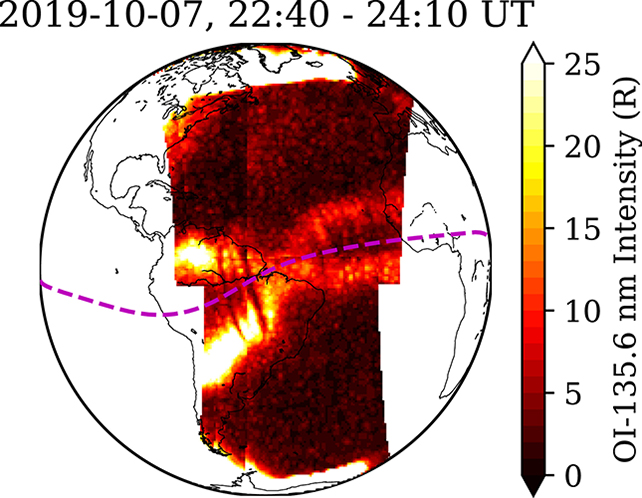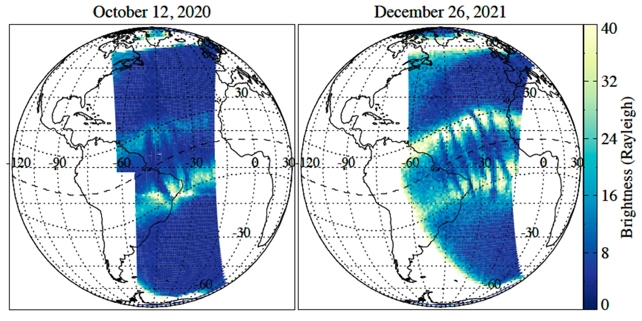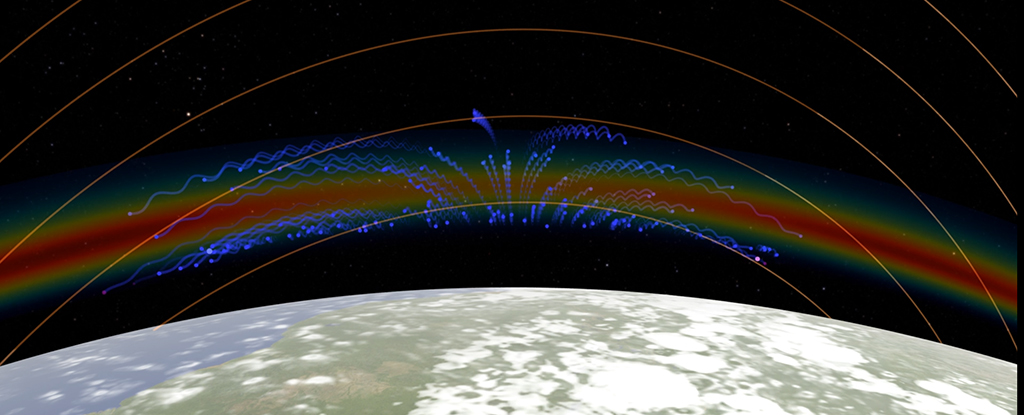Products You May Like
NASA scientists have discovered something of an alphabet soup in the ionosphere, the part of Earth’s atmosphere that sits about 48–965 kilometers (30–600 miles) above our heads – and the finding could help improve space weather forecasts and radio communications.
Shapes like this have been detected before, but the Global-scale Observations of the Limb and Disk (GOLD) imaging instrument used here gives us our best look at them yet – revealing strange X and C shapes turning up at unexpected times and in some surprising places.
The ionosphere becomes electrically charged in the day as sunlight strikes it, and this creates plasma bands of charged particles that are further influenced by Earth’s magnetic field. Crests and bubbles of plasma form the shapes that have now been observed.

Previous studies have shown merging crests forming an X shape after solar storms and large volcanic eruptions, but the data in this new study reveals they can form in so-called ‘quiet times’ as well, hinting that more localized factors are involved.
Computer models suggest lower atmospheric conditions could be pulling the plasma downwards.
“Earlier reports of merging were only during geomagnetically disturbed conditions,” says Fazlul Laskar, an ionosphere physicist at the University of Colorado.
“It is an unexpected feature during geomagnetic quiet conditions.”
Another finding that’s puzzled scientists is the appearance of C-shaped and reverse C-shaped bubbles in the plasma. These shapes are thought to be created by winds on Earth, just as wind directions might shape how a tree leans.

However GOLD has spotted these Cs forming surprisingly close together – sometimes around 634 kilometers (400 miles) apart – and again that points to more localized factors being involved, whether it’s a wind shear, a tornado, or something else.
At the moment, the tight packings of C shapes seem to be relatively rare, with only two observed by GOLD so far. However, the researchers are keen to investigate them further, and find out what’s causing them in the ionosphere.
“Within that close proximity, these two opposite-shaped plasma bubbles had never been thought of, never been imaged,” says ionosphere physicist Deepak Karan from the University of Colorado.
Plasma in the ionosphere is essential for radio waves being able to travel long distances, and discoveries in this field improve our understanding of how radio and GPS operate.
Disruptions in the ionosphere like those observed here could have an impact on important communication and navigation infrastructure.
This study and the GOLD data gives us another example of how improving technology and innovations in scientific research are helping us to understand more about Earth and the Universe around it – even as they constantly change and evolve.
“The fact that we have very different shapes of bubbles this close together tells us that the dynamics of the atmosphere are more complex than we expected,” says astrophysicist Jeffrey Klenzing from NASA’s Goddard Space Flight Center, who wasn’t directly involved in the study.
The research has been published in The Journal of Geophysical Research: Space Physics.
